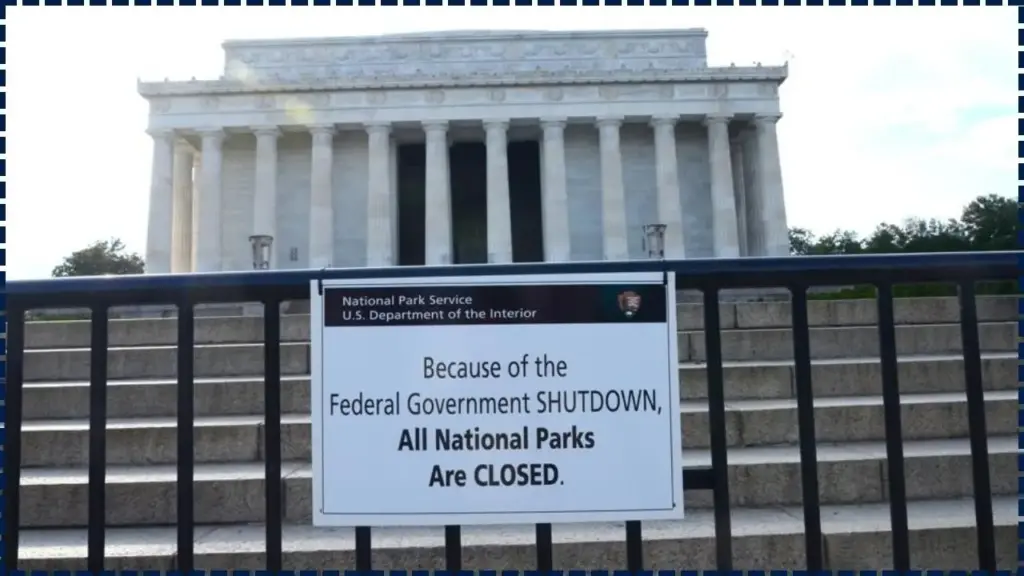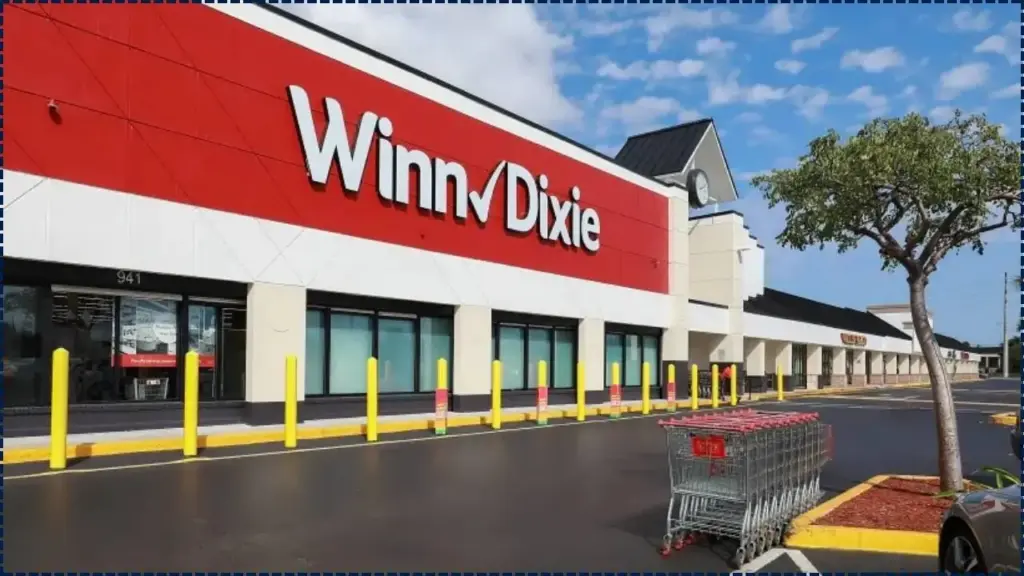The ongoing U.S. federal government shutdown, now in its fourth week as of October 24, 2025, has left national parks across the country in a state of disarray. While visitors can still access park grounds, vital services such as visitor centers, educational programs, and restroom facilities remain closed.

With furloughed staff and dwindling resources, national parks and their neighboring communities are losing millions of dollars in revenue daily, putting both park operations and local economies at risk.
Table of Contents
Government Shutdown Could Cost National Park Communities
| Key Fact | Detail |
|---|---|
| Shutdown’s Impact on National Parks | National parks are losing approximately $1 million daily in revenue during the shutdown. |
| Economic Losses for Communities | Gateway communities around national parks lose up to $80 million daily. |
| Staffing Shortages | Approximately 9,300 of 14,500 National Park Service staff are furloughed. |
The ongoing government shutdown is inflicting significant financial damage on U.S. national parks and the communities that depend on them. With millions of dollars lost daily, both parks and local economies are facing severe challenges.
The long-term effects of the shutdown, including deteriorating infrastructure and diminished tourism, could have lasting consequences. It is crucial for policymakers to act quickly to end the shutdown and restore funding to the National Park Service to prevent further harm.
Financial Losses for National Parks
National parks, managed by the National Park Service (NPS), play a vital role in U.S. tourism, generating revenue from entrance fees, campground reservations, and retail sales. The ongoing shutdown has halted the collection of these fees, leading to a daily loss of about $1 million, according to the National Parks Conservation Association (NPCA). This loss has serious consequences for the parks’ ability to fund maintenance, infrastructure, and staffing.
For parks such as Acadia National Park in Maine, which generates around $1.5 million in revenue each October, the impact is particularly harsh. Without entrance fees, parks are forced to cut back on essential services, including cleaning, safety monitoring, and visitor support.
Economic Impact on Local Communities
Many communities near national parks depend on tourism for their livelihoods. Hotels, restaurants, shops, and tour operators benefit from the steady influx of visitors who come to experience the nation’s natural treasures. However, with visitor centers closed and fewer services available, local businesses are feeling the strain.
The NPCA estimates that these gateway communities are losing up to $80 million in revenue every day the shutdown persists. In towns like Jackson, Wyoming, and West Yellowstone, Montana, businesses are reporting sharp declines in sales. In some cases, businesses are seeing a drop in income of up to 40%.
One example is Coram, Montana, near Glacier National Park. Local businesses there, including restaurants and retail shops, have reported a 38.5% decrease in sales, with many tourists choosing to cancel their visits or make alternative travel plans.
Staffing Shortages and Operational Challenges
Another major impact of the government shutdown is the furlough of National Park Service (NPS) staff. Of the 14,500 NPS employees, about 9,300 have been furloughed. Only essential staff, such as law enforcement officers and emergency responders, remain on duty. This skeleton crew is insufficient to manage the day-to-day operations of parks, which include maintaining safety, cleaning facilities, and managing visitor activities.
With staff shortages, parks have become more vulnerable to vandalism, environmental damage, and illegal activities. For example, the lack of personnel to patrol the parks means that instances of trespassing, littering, and off-trail hiking are becoming more frequent. This could lead to long-term environmental degradation if not addressed.
The limited staffing also hampers the collection of entrance fees and campground reservations. Some parks have attempted to use reserve funds to cover operational costs, but these funds are quickly being depleted, and experts warn that this practice may be unsustainable and, in some cases, illegal.
Visitor Experience Impact
Beyond the financial and operational losses, the government shutdown is also affecting visitors’ experiences. Visitors to national parks are accustomed to enjoying well-maintained facilities, educational programs, and guided tours. However, with many services closed, visitors are left to navigate the parks without the typical amenities.
At the Grand Canyon, for example, the shutdown has led to the closure of visitor centers, restrooms, and food services. While the park itself remains open, visitors are unable to access important information or assistance, making their visits less enjoyable. Many tourists have reported frustration with the lack of staff, and some have even expressed concern for their safety, given the absence of rangers and park guides.
Long-Term Consequences for Parks and Local Economies
If the government shutdown continues, both the parks and surrounding communities face long-term challenges. Without proper staffing and maintenance, national parks may experience significant delays in much-needed repairs. This could result in deteriorating infrastructure, unsafe conditions, and a diminished visitor experience in the future.
The shutdown could also have lasting effects on tourism. With fewer services available and poor visitor experiences, tourists may choose to visit other destinations in the future. The reputational damage to U.S. national parks could take years to repair.
Local communities are also at risk. Many small businesses that rely on park visitors for income may be forced to close, resulting in job losses and further economic hardship. Without tourist spending, local governments will also face a decrease in tax revenue, affecting public services and infrastructure projects.
Public and Political Reactions
The shutdown has prompted widespread criticism from both local officials and park-goers. Local governments near national parks have expressed concern over the severe financial toll the shutdown is taking on their economies. “Our community is already feeling the effects of the shutdown, and it’s only going to get worse,” said Karen Smith, mayor of Jackson, Wyoming.
At the national level, lawmakers are under pressure to resolve the impasse. Some politicians are advocating for a temporary solution to keep national parks operational, even if it requires using emergency funding or public-private partnerships.
Environmental groups have also called for an immediate resolution, emphasizing the importance of national parks to both environmental preservation and local economies. “National parks are critical to America’s natural heritage and to the livelihoods of people who live near them,” said Theresa Pierno, president of the National Parks Conservation Association.
Related Links
Google’s New AI Finance Page Could Change How You Invest
Meta AI Edges Toward Superintelligence: A New Era of Personal Empowerment
Alternative Solutions and Actions
In the absence of federal action, some parks have explored temporary solutions to mitigate the effects of the shutdown. Several parks have turned to local businesses for support, creating informal partnerships to maintain certain services, such as visitor information and guided tours. Private organizations have also stepped in to help fund park operations, though these arrangements are often short-term and limited in scope.
Some communities are also seeking to create alternative revenue streams to offset losses. For example, some local businesses have started offering discounted services or creating park-related events to attract visitors and generate income.
FAQ About Government Shutdown
Q: How much revenue are national parks losing during the government shutdown?
A: National parks are losing approximately $1 million in revenue per day due to the shutdown, including entrance fees and campground reservations.
Q: How are local communities affected by the government shutdown?
A: Gateway communities are losing up to $80 million daily in revenue as tourism declines, affecting hotels, restaurants, and retail businesses.
Q: What impact is the shutdown having on park operations?
A: Staffing shortages and closed facilities are leading to increased illegal activities, vandalism, and environmental damage in parks.
Q: What can be done to prevent further damage to national parks?
A: Legislative action to end the shutdown and restore funding to the National Park Service is essential to prevent further harm to parks and local economies.



















